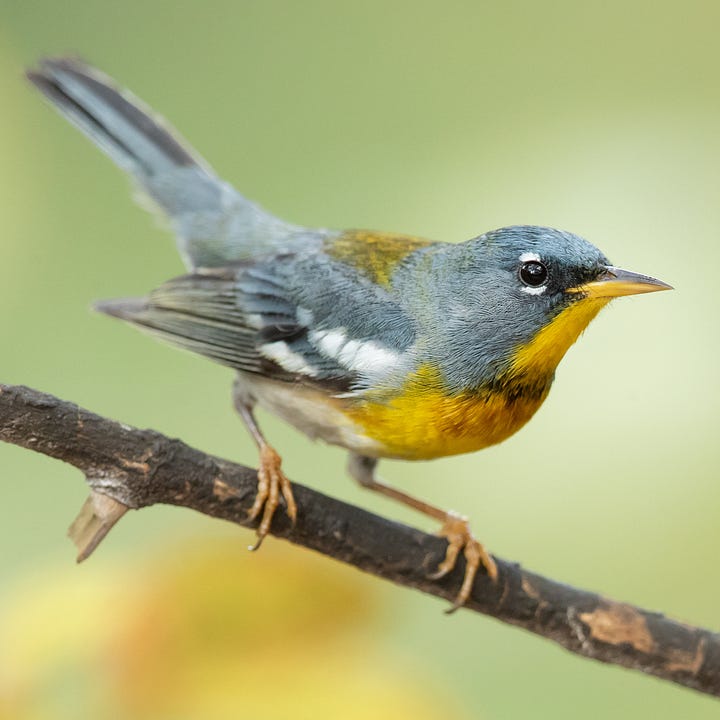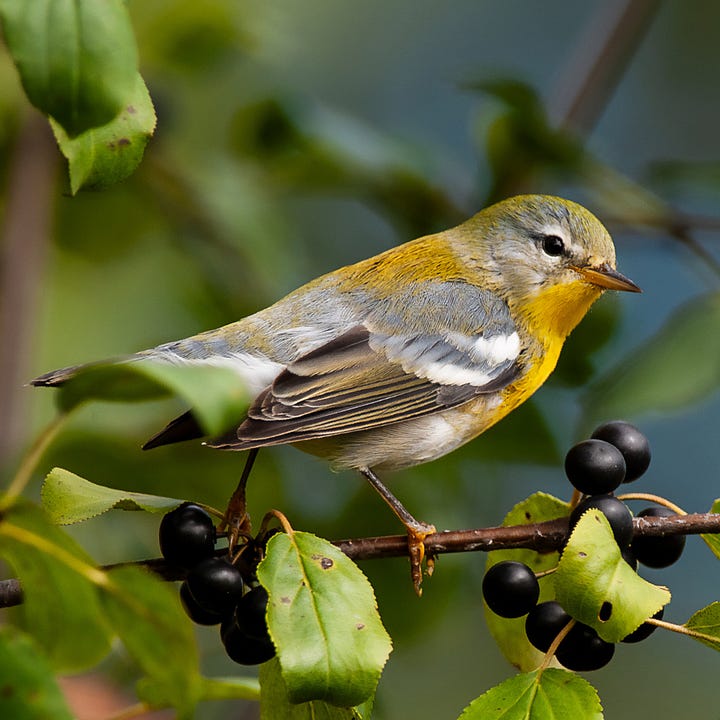Calendars hang. Clocks tick. Liquid crystal pixels alert us to a 10-minutes-from-now meeting we loath to make. Meanwhile the earth’s approx. nine hundred ninety-two billion non-human organisms move and eat and bloom and dew and touch and dance and shiver and scream and aerate.
A senses-exploding chorus of ancient, adaptive wisdom surrounds us. You’re not too captured by a piddly phone to notice, are you?
UPDATES & ANNOUNCEMENTS
Welcome back!
NEW YORKERS (this Saturday): Just like y’all are 365 party girls AND anxious about motherhood, bats are multifaceted, misunderstood and … HOT. Let’s pre-party with them! More info HERE.
GROUP DISCOUNT: 30% off anything from Nocs Provisions—no limits on products nor quantity. (Field and Pro Issue binoculars are our favs. The photo rig is great for identification.) NOTE: We're distributing orders IRL only. DM us your desires!
SHORTY-SEASON JULY 22—28
"Most living entities and systems on this planet obviously do not live by the Western human clock (though some, like the crows who memorize a city's daily garbage truck route, do of course adapt to the timing of human activities). To watch a brown creeper as it inches up and down, peering into crevices and extracting bugs with its little dentist beak, is thus a way of catching a ride out of the grid and toward a time sense so different that it is barely imaginable to us." ― Jenny Odell, Saving Time: Discovering a Life Beyond the Clock
Current Japanese micro-season: Paulownia trees produce seeds. As for McGolrick Park, perhaps New York City and even larger swathes of the eastern US, we notice—
Earth is damp, air is humid* • Panicle hydrangeas show • Cutleaf coneflowers bulb • American pokeweeds show • Sweet pepperbush flowers • Inland wood oat spikelets droop
*It’s always sweet when Japan’s poetic micros line up with ours. Though our tiny, relative wet front came a week before theirs, we swoon at reminders of shared experiences with far-flung neighbors
JULY 27, 2024 — SATURDAY
Conditions: Cooled out (relative) • Attendance: ~50 • Vibrations: Sky High
Saturday birds: Blue Jay · Red-tailed Hawk · Chimney Swift · Common Grackle · Laughing Gull (flyover) · Northern Flicker (flyover) · Northern Cardinal… And our 5 urban park besties: Rock Pigeon · European Starling · American Robin · House Sparrow · Mourning Dove
No pic of the day this issue. Too immersed in a phoneless present. Sorry, not sorry.
Last week’s pic o’ the day brought to you by—belated hottie reveal—Kelly Odette Laughlin
MICRO-TANGENT: DRAGONFLIES
Last issue’s micro-season saw dragonflies peak.
An iPhone photo upload to iNaturalist alerted your correspondent to the Blue Dasher species. Also sparked the Q: What dragonfly species are most common to NYC?




Blue Dasher - The males are easy to recognize with their vibrant blue color, yellow-striped thorax, and metallic green eyes. Females too have a yellow-striped thorax, but that’s over brown not blue. Ladies also have red eyes! Dashers are known to be voracious predators—eating nearly any flying insect, including mosquitos—consuming up to 10% of their body weight each day in food.
Eastern Amberwing - These babes are red-orange and small—slightly shorter than an inch, lengthwise. One of the only types of dragonflies that mimics a wasp via abdomen stripes and wasp-y wiggling, which encourages predators to back tf off.
Great Blue Skimmer - Blue Skimmers kinda look like dashers, but notice their eyes, not-striped tails and slightly more black accented wings. According to the incredible site InsectIdentification.org, females “flick” their fertilized eggs onto shore after attaching them to a single drop of water. Helps them stick!
Common Green Darner - Large, green-headed, cyclops-y (a decoration not an actual third eye). Back at InsectIdentification.org: “pregnant females will bend their abdomens over water and insert an egg, one-at-a-time, into the stem of an underwater plant.” When they eggs hatch, naiads (juveniles) emerge—looking more like tiny lobsters than dragonflies. Babies live underwater and feed on tadpoles, other aquatic insects, and tiny fish until they grow then crawl out of the water and morph into their adult forms.
There’s so much you can do with iNaturalist’s search box. Enter any organism type or species, set a location—iNaturalist automagically shows what’s most commonly logged [example]
Member of our growing west coast audience? [here’s your example]
And here’s an equally wonderful/horrible video of a dragonfly morph … set to piano music
SHORTY-LESSON: FALL WARBLERS
Last issue we made a confession.
Our springtime warbler lesson that covered the 22 commonest-to-NYC warbler species—was only a first half.
Part Deus? Fall plumages! As we explained, breeding male warblers shed spring’s fancy fits for feathers that have them looking indistinguishable from females and juvenile males. These lüks are what we’ll primarily notice when, beginning in late August, migrating birds pass back through NYC en route to southern wintering grounds.
This week we have 3 species who—check the frequency charts, hot stuff—spend more time in McGolrick Park than most warblers.


Our favorite tiny, upward-buzzing* baddie. The springtime Northern Parula’s distinctive orange/black necklaces over yellow chests + white tummies make them easy to spot from below.
In fall, the necklace fades. Note too how the blue-gray dulls and their eye markings change from spring’s white hamburger buns to fall’s wider but still broken eye-rings.
But the yellow + white stays! So too do the olive-green superhero capes, and overall tiny bods. (They’re our smallest eastern warbler.)


The first complete makeover of our fall lessons is oh so dramatic. Redstarts swap springtime black + orange for autumn’s gray + yellow. Though grays and yellows are perilously common among fall warblers, Redstarts remain distinctive for their long, sometimes fanned tails. Look too for, from below, yellow armpits on gray-white chests/bellies.


We told you grays and yellows are common in fall. Palms drop springtime golds and burgundy for shades of gray + a touch of tuchus yellow. Subtle beauty alert!
Like Redstarts, Palms have a fantastic, tail-borne tell—theirs are almost always pumping! Video proof here.
What do you think? Making sense so far? Reply to this email with questions! And keep in mind that written lessons are always harder to absorb than IRL experiences, which you’re better equipped for than you realize.




